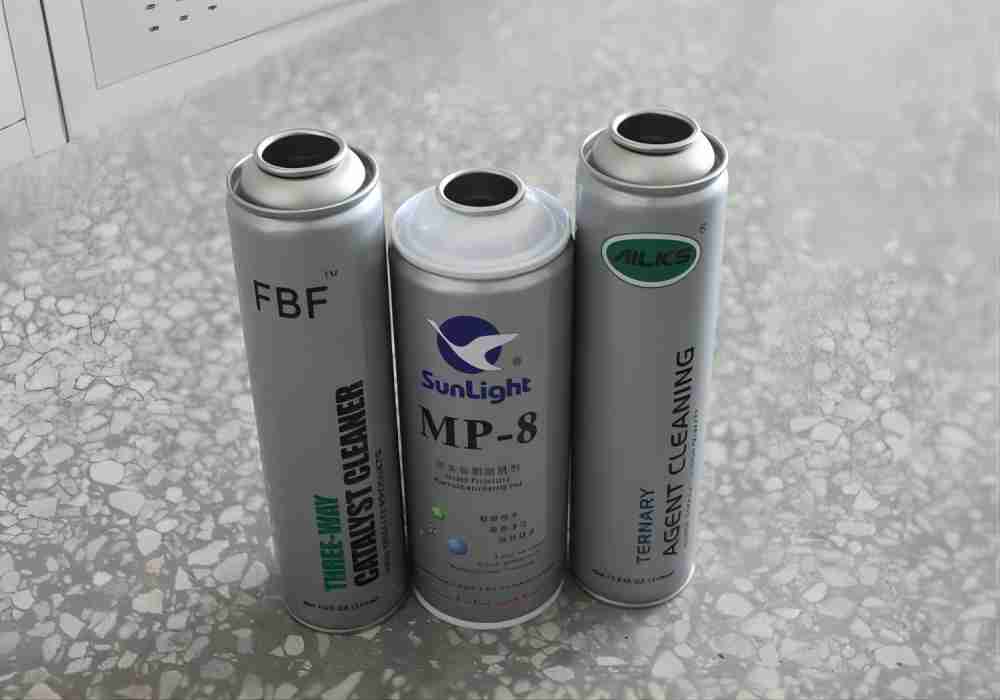The processing technology of aluminum material for making all-aluminum cans is a benchmark for evaluating a country’s level of aluminum processing technology. The manufacturing of aluminum cans integrates advanced technologies from various industries such as metallurgy, chemical engineering, machinery, electronics, and food, becoming a microcosm of deep aluminum processing.
The production process of high-precision aluminum alloy strips mainly includes processes such as melting and casting, milling, homogenization and heating, hot rough rolling, hot finishing rolling, finishing, shearing, and annealing. To ensure that the strip has excellent deep-drawing performance, fatigue resistance, corrosion resistance, excellent surface quality, high strength, sufficient plasticity, low earing rate, and strict dimensional tolerances, the material must have a suitable chemical composition, excellent metallurgical quality, reasonable structure, and plate shape tolerances. To meet these requirements, effective control of various production links of aluminum strips is necessary, and key links such as composition control, aluminum melt treatment, and optimization of hot rolling processes are critical to improving strip quality.
In general, the processing technology of AA3004/3104 aluminum alloy strips for can bodies includes semi-continuous casting (ingot thickness 500-750mm), homogenization treatment at 580-610°C for 4-12 hours, hot rough rolling at around 530-550°C, and hot finishing rolling, with a final rolling thickness of 2-3.5 mm. Control of the earing rate is crucial, as a large earing rate not only increases the trimming amount and material waste, raising production costs, but also leads to cracking between the two ears during deep drawing and thinning. Measures taken by can material manufacturers to reduce the earing rate mainly include controlling the final rolling temperature of hot rolling to keep the material in a fully recrystallized state and strictly controlling the cold rolling deformation amount, ultimately achieving a rolling structure of about 25% recrystallization.

More than 97% of can body materials are rolled into coils using semi-continuous cast ingots on (1+3) or (1+4) hot continuous rolling lines, and then cold-rolled to the required thickness using a cold continuous rolling line or a single-stand four-high reversible cold rolling mill. Cover materials and pull-ring materials can be rolled on a general four-high single-stand hot rolling mill or on a hot continuous rolling line. The state of can body material is H19, where the cold rolling rate should reach 88%. The international advanced indicator for comprehensive product yield from milling (both large surfaces) in the hot rolling section to cold rolling to the finished product is currently around 70%. Considering 3% of casting and burning loss and loss, and milling on all four sides, the comprehensive product yield is only about 65%.
For can covers (covers, pull-ring parts, etc.), aluminum alloy strips are first treated with oxidation to improve paint adhesion and corrosion resistance. After painting on both sides, the can covers undergo forming processing. There are two types of cover materials: one with a pre-coating layer and the other without. The coating can be pre-coated at the rolling mill or coated in a dedicated post-coating plant, with pre-coated materials being coiled and post-coated materials mostly in blocks.
Due to the unique characteristics of aluminum alloy strips for aluminum cans, a hot rolling supply billet production process must be adopted. During hot rolling, it is necessary to reasonably control the metallurgical structure, mechanical properties, surface quality, geometric dimensions, plate shape, etc., of the strip blank to meet the quality requirements of subsequent processing and final products. Currently, most countries in the world basically adopt the hot continuous rolling supply billet method to produce high-precision and high-quality aluminum can materials. Continuous casting and rolling, single stand single coil hot rolling supply billet, and single stand double coil hot rolling supply billet methods are difficult to produce high-quality can materials, and even the 1+1 hot rolling supply billet method is rarely used due to its unstable quality.
All can materials are currently hot rolled and then cold rolled, and there is no commercial cold-rolled can material produced by continuous casting and rolling or continuous casting and rolling of coil blanks. Reports about “developed countries starting to use continuous casting and rolling, continuous casting and rolling technology to produce aluminum alloy materials for cans” need verification. Both the aluminum processing industry and the canning industry, after years of research, believe that continuous casting and rolling of coil blanks cannot be used for cold-rolled can materials. At least until 2015, it was not feasible unless double-roll casting and rolling technology made significant breakthroughs, capable of producing strips with good metallurgical structure, low anisotropy, and high deep-drawing performance.
Currently, countries worldwide that can produce can body and can cover materials include the United States, Germany, France, Japan, South Korea, Brazil, Russia, Australia, China, etc. About 90% of such aluminum plate strips are controlled by four major aluminum companies: Novelis, Alcoa, Alcan, and Hydro Al. Many enterprises can produce 5052 alloy for pull rings, but due to small production volumes, they are mostly produced by smaller companies.
**Processing Technology of Aluminum Materials for Pressure Vessels**
The primary processing technology for aluminum ingots (low-alloyed industrial pure aluminum) used in pressure vessels includes melting, molten metal treatment, casting ingots (thickness 40-60mm), hot rolling-cold rolling (final rolling thickness 5-7mm), blanking (original block), and recrystallization annealing treatment.
To ensure that aluminum ingots have the required special properties, the key is to improve the material’s deformation ability from multiple aspects, particularly by enhancing the material’s deformation ability through improvements in metallurgical quality, such as purifying the aluminum melt and refining the grain structure during the smelting process. At the same time, it is necessary to ensure that the material has a certain strength to ensure that the formed aluminum vessel meets the strength requirements for withstanding deformation pressure and bursting pressure.




